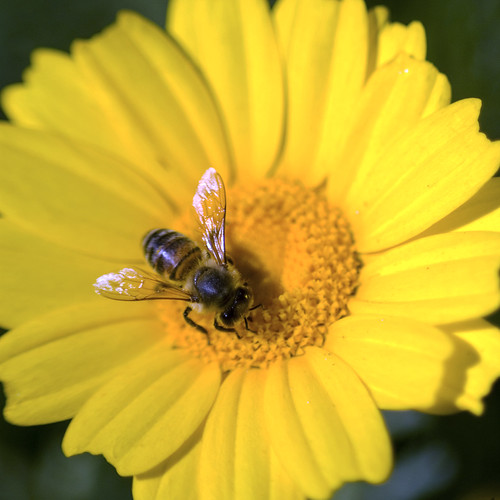Bees play a vital role in our ecosystem, contributing significantly to the pollination of various plants and flowers. However, not all flowers attract these buzzing pollinators; in fact, some flowers are quite unappealing to bees. Understanding which flowers bees hate can help gardeners and nature enthusiasts create a more bee-friendly environment while also enhancing their gardens with blooms that complement their preferences. This article will delve into the world of flowers bees hate, examining specific types and the reasons behind their aversion.
When cultivating a garden or selecting plants for landscaping, it's essential to consider the needs and preferences of local wildlife, including bees. While bees are critical for pollination and maintaining biodiversity, certain flowers can repel them. By identifying these flowers, you can be more intentional in your planting choices and create a garden that thrives without attracting unwanted guests. This exploration of flowers bees hate will guide you in making informed decisions about your gardening endeavors.
In addition to understanding the flowers that bees tend to avoid, it's also useful to know how to create a balanced ecosystem conducive to both pollinators and other plant species. With the right knowledge, you can ensure that your garden flourishes while minimizing the presence of bees in areas where they may not be wanted. Let's dive deeper into the fascinating world of flowers bees hate and discover how you can create a harmonious garden.
What Are the Flowers Bees Hate the Most?
Bees tend to avoid specific flowers due to various factors, including scent, color, and the structure of the flower. Here are some flowers that bees generally dislike:
- Marigolds: Known for their vibrant colors, marigolds emit a strong scent that is often unappealing to bees.
- Snapdragons: While beautiful, the structure of snapdragons can be challenging for bees to navigate.
- Geraniums: The scent of geraniums can repel bees, making them a less attractive option.
- Roses: Certain types of roses, particularly those with dense petals, can be difficult for bees to access.
Why Do Bees Dislike Certain Flowers?
The aversion of bees to certain flowers can be attributed to several factors:
- Scent: Strong fragrances can deter bees, as they typically prefer floral scents that are sweet and light.
- Color: Bees are naturally attracted to specific colors, primarily blue, purple, and yellow. Flowers that lack these colors may not appeal to them.
- Flower Structure: Flowers that are too complex or have deep corollas can be inaccessible to bees, discouraging them from visiting.
Which Colors of Flowers Do Bees Dislike?
Bees have specific color preferences that influence their foraging behavior. Generally, they are more attracted to:
- Blue
- Purple
- Yellow
Conversely, bees tend to avoid flowers in shades of red and orange, which may explain their dislike for certain flowers that fall into these categories.
How Can You Create a Bee-Friendly Garden?
While it's essential to know the flowers bees hate, it's equally important to create an environment that attracts them. Here are some tips for cultivating a bee-friendly garden:
- Choose Native Plants: Native plants are often more attractive to local bee species.
- Plant in Clusters: Grouping flowers together makes it easier for bees to forage.
- Avoid Pesticides: Chemicals can be harmful to bees, so opt for organic gardening methods.
What Other Insects Are Repelled by These Flowers?
Aside from bees, certain flowers may also repel other insects. For example, marigolds are known to deter aphids, while geraniums can repel mosquitoes. Understanding these relationships can help you manage your garden's ecosystem more effectively.
Are There Any Benefits to Planting Flowers Bees Hate?
While planting flowers bees hate may not be beneficial for attracting pollinators, there are some potential advantages:
- Reduced Bee Activity: If you want to minimize bee presence in specific areas, these flowers can help.
- Diversity of Plant Life: A variety of flowers can create a more visually interesting garden.
What Should You Consider When Choosing Flowers for Your Garden?
When selecting flowers for your garden, consider the following factors:
- Local Climate: Choose flowers suitable for your area's climate and soil type.
- Maintenance Requirements: Consider how much time you can dedicate to caring for your plants.
- Allergy Considerations: Some flowers may trigger allergies in certain individuals.
How Do You Balance Bee-Friendly and Bee-Repelling Flowers?
Finding the right balance between attracting bees and repelling them requires thoughtful planning. Here are some suggestions:
- Zone Your Garden: Designate specific areas for bee-friendly and bee-repelling plants.
- Monitor Plant Growth: Regularly assess how well your garden is meeting your goals.
Conclusion: Understanding Flowers Bees Hate
In conclusion, understanding the flowers bees hate can be a valuable tool for gardeners looking to create a balanced and harmonious environment. By selecting the right plants and considering the needs of both bees and other insects, you can cultivate a garden that thrives while minimizing the presence of pollinators where they might not be wanted. Remember, the key is to create a space that is both beautiful and functional, ensuring a thriving ecosystem for all its inhabitants.




